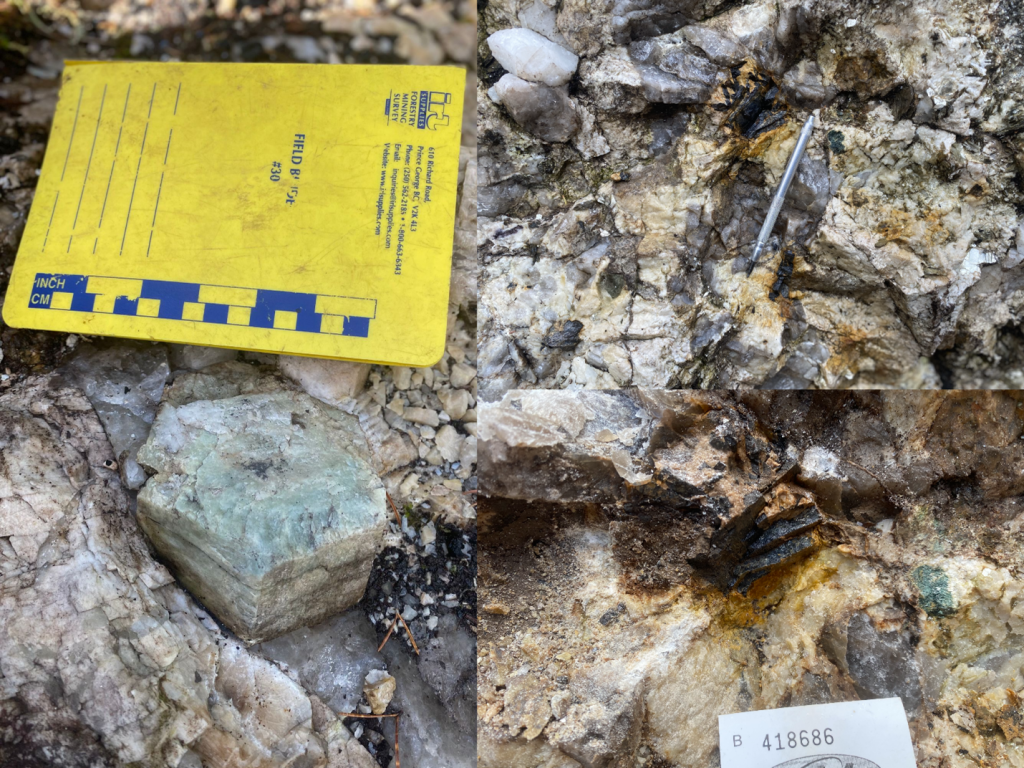Highlights:
- The Company has completed a 2-week visit covering approximately 5% of the 15,680-hectare project area. 217 rock samples have been collected and submitted for laboratory analysis.
- The lithium-cesium-tantalum (“LCT”) pegmatite trend on the property has a potential strike length of >8 km.
- ~3 km of strike and ~1 km of width of the system has been mapped in detail, with 45 new pegmatites identified within this LCT‑field, bringing the total to 47. The system is open in both directions.
- The largest pegmatitic outcropping is ~350 m long by ~70 m wide with full size unknown.
- Beryl, tantalum oxides and further coarse-grained tantalite have been identified throughout the system, confirming that the White Willow system is highly evolved as coarse‑grained tantalite will be present in the most fractionated zone of an LCT-system where spodumene, if present, is anticipated to occur.
- The Company has also completed a historical data compilation that further demonstrates the White Willow system is very evolved, as very anomalous cesium (>50 ppm) and lithium (>300 ppm) were identified in 36 and 45 samples, respectively, with 6 samples above 1,000 ppm Li up to 0.5% LiO2.
The presence of very anomalous lithium and cesium indicates that the samples were collected from within the outer zone of a fertile LCT-system which is where spodumene, if present, is anticipated to occur.
- The Company also announces that its technical team has mobilized and arrived onsite in preparation for the start of drilling for its program at its Jackpot Lake lithium brine project in Nevada.
Vancouver, British Columbia / June 14, 2023 – Usha Resources Ltd. (“USHA” or the “Company”) (TSXV: USHA) (OTCQB: USHAF) (FSE: JO0), a North American mineral acquisition and exploration company, has discovered a significant lithium-cesium-tantalum (“LCT”) system at its White Willow Lithium Pegmatite Project (“White Willow” or the “Project”). The property is situated 170 kilometres west of Thunder Bay in proximity to other lithium projects in the region, such as the Seymour Lake Lithium Project, the Georgia Lake pegmatite field, and the Separation Rapids Lithium deposit, showcasing the region’s rich lithium potential.
The maiden geological work was completed on only approximately 5% of the 15,680-hectare project area, and the Company plans on returning in July to complete a more comprehensive field program to build on the findings following the receipt of analytical results.
“We are thrilled with the findings from this initial program at White Willow,” said Deepak Varshney, CEO of Usha Resources. “Unlike most companies who have recently acquired properties in Ontario and Quebec with a focus on location, our acquisition of this project was predicated on a technical model that showed that the two initial pegmatites identified were part of a larger unexplored system waiting to be discovered. Having now identified 45 new pegmatites within a zone where spodumene is anticipated to occur and grown the strike and width of the system over 10 and 20 times in size, respectively, we believe Willow to be a flagship asset where we firmly believe Ontario’s next major lithium discovery will occur.”
The Company completed a two (2) week site visit with its technical team where it completed a first-pass program comprised of sampling pegmatites, mapping, and prospecting. 217 rock samples have been collected and submitted for laboratory analysis.
The LCT pegmatite trend at the Project has a potential strike length of over eight kilometres as beryl was noted through prospecting across the length of the pegmatite swarm. Approximately three kilometres of strike was mapped in detail, with 45 new pegmatites identified, the largest of which was approximately 350 metres by 70 metres, indicating that a significant LCT‑system is present at White Willow. The system is open in strike and width.
Beryl and tantalite were identified throughout the system, including a second showing of coarse-grained tantalite approximately 80 metres down-strike from the Maple Leaf Showing which has assayed 14.64% Ta2O5, confirming that the White Willow system is highly evolved. The identification of tantalite throughout the pegmatite swarm is a key finding as coarse‑grained tantalite will be present in the most fractionated zone of an LCT-system where spodumene, if present, is anticipated to occur.
Coarse-grained tantalite is only known to be found at one other locality in Ontario which is the North Aubrey pegmatite at Green Technology Metals (GT1) Seymour Lake Project where GT1 has identified a 9.9 Mt resource at 1.04% Li2O.
In addition to the above, the Company has also completed a historical data compilation that also demonstrates the White Willow system is very evolved. The following were the key findings from the review:
- 103 samples were identified to contain anomalous lithium (>115ppm) of which 45 were very anomalous (>300ppm). 6 samples assayed above 1,000 ppm, up to 0.5% LiO2, further demonstrating the potential for spodumene as Li contents for muscovite from a spodumene pegmatite is usually >1000 ppm[i]. A sample from the host rock was also identified to contain 1,300 ppm lithium, indicating that a secondary lithium rich fluid had passed through as the enrichment of the host rock would be due to “bleed” from the pegmatitic melt as it was injected due to intrusion of the parental granite.
- 86 samples were identified to contain anomalous cesium (>50ppm) of which 36 were very anomalous (>115ppm) with a high of 1,833 ppm Cs2O. The presence of very anomalous cesium indicates that the samples were collected from within the outer zone of a fertile LCT-system which is where spodumene, if present, will be identified.
- 47 samples were identified to contain anomalous tantalum (>30ppm) of which 6 samples were very anomalous (>100ppm) including the coarse-grained tantalite that assayed 14.64% Ta2O5 at the Maple Leaf Showing.
- Till and lake sediment surveys identified highly anomalous lithium values that are in the 98th percentile of the entire provincial government database.

Jackpot Lake Exploration Update
The Company is also pleased to announce that its technical team has mobilized and arrived onsite in preparation for the resumption of drilling at its Jackpot Lake lithium brine project in Nevada.
The objective is to advance each of JP22-01 and JP22-02 to approximately 2,000 feet, thereby potentially greatly expanding on the 99-foot and 273-foot higher-porosity sand and conglomerate zones already identified in each drill hole, respectively, where it believes the best potential brines are present. Sampling these zones is a high priority for the project as the coarse-grained basal units are a primary focus for expansion at Albemarle’s Silver Peak mine, the only domestic supplier of lithium within the U.S., and at Pure Energy’s Clayton Valley project where a large volume of brine with superior grades has been identified.
The work will build on the recent identification of the highest grades of lithium at the project at JP22-02, where grades as high as 820 ppm (average 334 ppm over 30 samples) were identified in shallow soils (less than 500 ft), confirming the soils at the project are highly enriched in lithium and compare very favourably with the reported average of 100 ppm for the Esmeralda formation, one of the potential sources of the lithium enrichment for the brines present in Clayton Valley which hosts Albemarle’s Silver Peak lithium brine mine.
Qualified person
The technical content of this news release relating to the Jackpot Lake Project has been reviewed and approved by Mr. Seth Cude, P.G., CPG. RM, M.Sc., a qualified person as defined by National Instrument 43-101 Standards of Disclosure for Mineral Projects (“NI 43-101”).
The technical content of this news release relating to the White Willow Project has been reviewed and approved by Mr. Andrew Tims, P.Geo., a qualified person as defined by National Instrument 43-101.
About Usha Resources Ltd.
Usha Resources Ltd. is a North American mineral acquisition and exploration company focused on the development of quality battery and precious metal properties that are drill-ready with high-upside and expansion potential. Based in Vancouver, BC, Usha’s portfolio of strategic properties provides target-rich diversification and consist of Jackpot Lake, a lithium brine project in Nevada; White Willow, a lithium pegmatite project in Ontario that is the flagship among its growing portfolio of hard-rock lithium assets; and Lost Basin, a gold-copper project in Arizona. Usha trades on the TSX Venture Exchange under the symbol USHA, the OTCQB Exchange under the symbol USHAF and the Frankfurt Stock Exchange under the symbol JO0.
USHA RESOURCES LTD.
For more information, please call Tyler Muir, Investor Relations, at 1-888-772-2452, email [email protected], or visit www.usharesources.com.
Neither TSX Venture Exchange nor its Regulation Services Provider (as that term is defined in policies of the TSX Venture Exchange) accepts responsibility for the adequacy or accuracy of this release.
Forward-looking statements:
This news release may include “forward-looking information” under applicable Canadian securities legislation. Such forward-looking information reflects management’s current beliefs and are based on a number of estimates and/or assumptions made by and information currently available to the Company that, while considered reasonable, are subject to known and unknown risks, uncertainties, and other factors that may cause the actual results and future events to differ materially from those expressed or implied by such forward-looking information. Readers are cautioned that such forward-looking information are neither promises nor guarantees and are subject to known and unknown risks and uncertainties including, but not limited to, general business, economic, competitive, political and social uncertainties, uncertain and volatile equity and capital markets, lack of available capital, actual results of exploration activities, environmental risks, future prices of base and other metals, operating risks, accidents, labour issues, delays in obtaining governmental approvals and permits, and other risks in the mining industry.
The Company is presently an exploration stage company. Exploration is highly speculative in nature, involves many risks, requires substantial expenditures, and may not result in the discovery of mineral deposits that can be mined profitably. Furthermore, the Company currently has no reserves on any of its properties. As a result, there can be no assurance that such forward-looking statements will prove to be accurate, and actual results and future events could differ materially from those anticipated in such statements.
